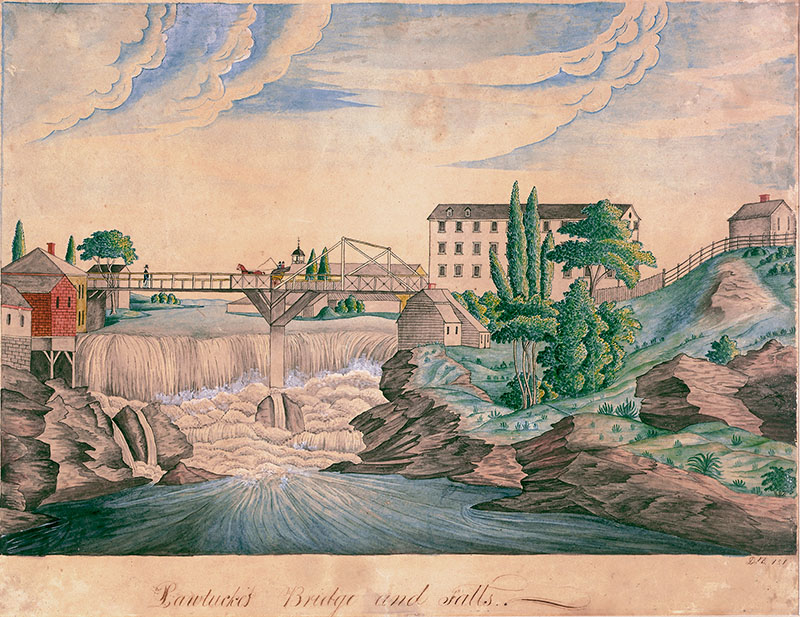Pawtucket Bridge and Falls

| Maker | Unknown |
| Date of Creation | 1810–19 |
| Location | Pawtucket Falls, Rhode Island |
| Materials | Paint, watercolor ink paper |
| Institution | Rhode Island Historical Society |
| Credit Line | N/A |
| Accession Number | 1971.23.1 |
| Photo Credit | Rhode Island Historical Society |
Pawtucket is an Algonquin word for “place of the falls.” At the bottom of the falls, the freshwater Blackstone River becomes the brackish Seekonk River. For centuries, Native Americans crossed the river on the rocks below the falls. This spot allowed them to cross on foot from one side of Narragansett Bay to the other. Several Native American trails met at this crossing, and it was also used as a fishing site. In 1671, Joseph Jenckes, Jr., built an iron forge by the falls. He used the water to power his trip hammer and blast furnace. Soon, other iron workers joined him, founding the Village of Pawtucket. Pawtucket grew in the early 1700s, especially after a bridge was built over the Falls in 1713. A dam and power canals were also built. Iron works, grist mills, sawmills, oil mills, and shipyards were some of the early businesses in the area. In the 1780s, wealthy Providence merchant Moses Brown decided he wanted to build water powered machines to make cotton thread. He rented a shop in Pawtucket to take advantage of the waterpower and the local machine makers. Also, ocean-going ships could sail up the Seekonk River to within a few hundred feet of the Falls. Those ships could bring in raw cotton from Southern plantations and take away the finished textiles. At first, Brown’s machine experiments failed, but in 1789 Samuel Slater came to work for him. Slater had worked in water-powered cotton mills in England. In 1790, with Slater’s knowledge and the local mechanics’ skills, they built new experimental machines that worked, achieving the first water-powered cotton spinning in America. Three years later, they moved the machines to the newly built Slater Mill. This image of the Pawtucket Bridge and Falls with Slater Mill shows the typical reliance on natural power sources for industry. In this view, on the left is group of yellow clapboard and brick buildings, and on the right is large building and several smaller ones. Behind the bridge, the building with cupola is Samuel Slater’s Mill. The painting is signed “D.B. 181-” in the lower right, but the artist is unknown.
